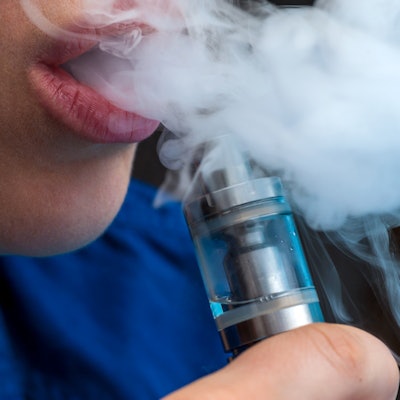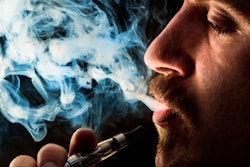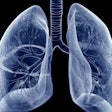
Vaping or using electronic cigarettes (e-cigarettes) changes a person's biofilm within 24 hours of exposure, according to a study published on May 27 in Science Advances. Months of vaping left oral cavities resembling those of patients with severe periodontitis.
While those who participated in the study didn't show signs of active oral disease, the change in their oral profiles puts them at risk of developing conditions such as periodontitis. This showed that using e-cigarettes is no safer than smoking tobacco cigarettes, according to the study authors.
"[This] calls into question the belief that e-cigarettes are safe, and the harm reduction narrative promoted by advertising campaigns," wrote the group, led by Purnima Kumar, BDS, PhD, a professor at Ohio State University College of Dentistry.
About 6% of people in the U.S., including 3 million high school students, use e-cigarettes, which contain potentially toxic substances, volatile organic compounds, and metals. Agencies and healthcare professionals began focusing on e-cigarette use after the outbreak of e-cigarette, or vaping, product use-associated lung injury (EVALI). In December, the ADA called for a total ban on any products that have not been approved for tobacco cessation purposes by the U.S. Food and Drug Administration (FDA). At the time, the ADA also advocated for research funding to study the safety and effectiveness of e-cigarettes and vaping products for tobacco cessation purposes and their effects on the oral cavity.
This is the first human study, which was supported by grants from the U.S. National Institutes of Health and the FDA, that shows how vaping affects the oral cavity.
Plaque samples were taken from under the gums of the 123 participants with healthy mouths, and the bacteria found there were analyzed. The participants included 25 smokers, 25 nonsmokers, 20 e-cigarette users, 25 former smokers currently using e-cigarettes, and 28 people who were using both. The authors used DNA deep sequencing of the bacterial genomes to determine which microbes existed and how they functioned.
E-cigarette users had an overrepresentation of pathogens, higher microbial virulence signatures, and brisk proinflammatory signals in their oral cavities, which similarly occur in those with severe periodontitis, the authors wrote.
Longtime and former cigarette smokers, whose smoking would have predisposed them to bacteria that cause oral disease, had high-risk microbes in their oral cavities that were associated with vaping after only three to 12 months of e-cigarette use.
Additionally, vapers showed damaging effects to their oral profiles whether they used nicotine or not, leading the researchers to believe the heated and pressurized liquids in e-cigarette cartridges likely caused vapers' mouths to turn into a welcoming environment for disease-causing bacteria.
Though no specific study limitations were noted, the authors acknowledged that the cross-sectional nature of the study did not allow for time-to-event type inferences. Nonetheless, evidence suggests that the effects of e-cigarettes on the oral cavity might be evident much earlier than with smoking, the authors wrote.
"The risk-for-harm from e-cigarettes is different from, but not less than, conventional cigarettes," they wrote.



















